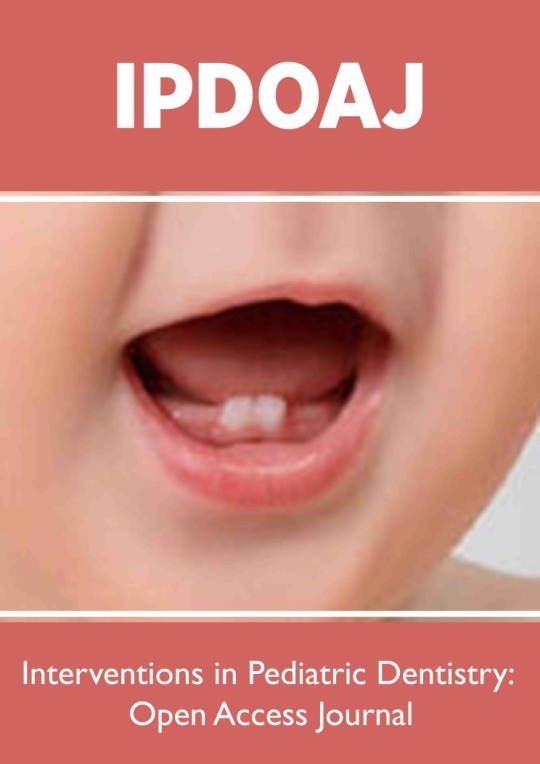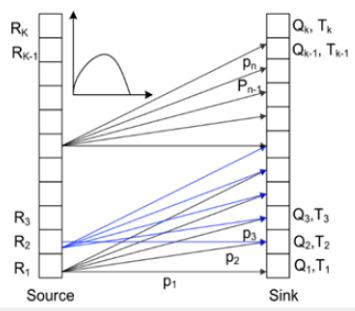#abstractmani
Text
Can Genetics Play A Role in Children’s Tooth Decay?

Abstract
Many people still get decay despite regular care of their teeth. Studies over the years have shown genetics has been very influential in the health of teeth. Some people think that genetics only affects the materials of the teeth, while genetics also affects the amount of sugar consumed. Studies have shown that many people are genetically more likely to consume sugars, and their metabolism is adjusted to consume these sugars. Microorganisms are another factor that can cause tooth decay. Our immune system determines what microorganisms are naturally present in our mouths. The immune system is based on genetics, so genetics can affect tooth decay through the immune system and the presence of bacteria. Although the role of genetic factors in the development of dental caries is well established, the role of environmental factors should not be underestimated. That’s why in this article we will talk about the role of both genetics and environmental factors in tooth decay.
Keywords: Genetic; tooth decay; sugar consumption; metabolism; microorganism; immune system
Read More About This Article Please Click on Below Link:
https://lupinepublishers.com/pediatric-dentistry-journal/fulltext/can-genetics-play-a-role-in-childrens-tooth-decay.ID.000254.php
Read More About Lupine Publishers Google Scholar Articles:
https://scholar.google.com/citations?view_op=view_citation&hl=en&user=h1QvhsYAAAAJ&citation_for_view=h1QvhsYAAAAJ:pqnbT2bcN3wC
#Lupine Publishers#Lupine Publishers Group#Interventions in Pediatric Dentistry Open Access Journal#Journal of Pediatric Dentistry#IPDOAJ
0 notes
Photo

*gifted* Happy Monday! I had a little pamper session yesterday, I filed my nails down and gave my cuticles a good oiling, then I opened a new stamping plate sent to me by @bornprettystore ❤ It is @nicolediary_com plate 144 ❤ This is a really cute plate with abstract designs ❤ It is nicely etched and I had no problems with pickup ❤ . . This is the first abstract design I've done and was inspired by amazing Aanchal @aanchysnails ❤ Her nails are amazing, you should check them out! . . The base is @barrymcosmetics Cotton and I stamped with @whatsupnails Hotter than Red ❤ Also used Barry M Lilac Orchid and Charcoal ❤ Top coated with their Matte nail Paint ❤ . . . . . . #bornprettystore #whatsupnails #abstractnails #abstractmani #nailsonpoint #nailsobsession #lookatthosenails #nailstamping #stampingnailart #nailenvy #theartofnail #nailjunkie #nailartofinstagram #thenailartstory #nailart #naildesigns #manicure #nailstagram #instanails #nailpolish #nailspafeature #ignails #nailitdaily #nailedit https://www.instagram.com/p/B-Wx_DwD02c/?igshid=1idbc4iqyzmkz
#bornprettystore#whatsupnails#abstractnails#abstractmani#nailsonpoint#nailsobsession#lookatthosenails#nailstamping#stampingnailart#nailenvy#theartofnail#nailjunkie#nailartofinstagram#thenailartstory#nailart#naildesigns#manicure#nailstagram#instanails#nailpolish#nailspafeature#ignails#nailitdaily#nailedit
1 note
·
View note
Photo

I hope you all like These #abstractnails 💗💖 Products used are, 💗@lenphor without limit no35 💗@nicole diary stamping plates #nd104 #nd112 💗@Bornprettystore black & white stamping polish. 💗@revlonindia matt top coat. . * #nailbyps #abstractmani #abstractnailart #pinknails #pinknailpolish #nailart #nailartist #nailartlove #indiannailblogger #indiannailartists #indiannails #nailartlove #nailstampingaddict #nailsonfleek #stampingnailart #stampingonnails #unhas #unhasdecoradas https://www.instagram.com/p/Caef6N0sAqW/?utm_medium=tumblr
#abstractnails#nd104#nd112#nailbyps#abstractmani#abstractnailart#pinknails#pinknailpolish#nailart#nailartist#nailartlove#indiannailblogger#indiannailartists#indiannails#nailstampingaddict#nailsonfleek#stampingnailart#stampingonnails#unhas#unhasdecoradas
0 notes
Photo

#Repost @urbannailart with @make_repost ・・・ Hi guys! 🙂 Here is a shot of the base I used for my previous #nailstamping design. Please, ❤LIKE 💬COMMENT 📩 SAVE and 📲SHARE I used @parrot_polish 💟 'Rossia Pacifica Purple' 💟 'Pink Piranha' 💟 'Jelly Lemon' 💟 'Blue Hawaiian' 💟 'Honey Lavender' I also used @dancelegendofficial 'Spot It' White for bubble effect. #bubblenails #brightnails #abstractmani #parrotpolish #dancelegend #nailtrends #nailsforspring #beautifulnails #nailsoftheday #nailartideas #nailswagg #nailartlookbook #indiepolish #naturalnails #nailstagram Disclaimer: Please remember that although my reviews are 100% honest, buying products I used is at your own discretion and all the claims on quality/condition of received products should be addressed to the brands. Never purchase products based on one particular review, please do your research. Thank you!💖 https://www.instagram.com/p/CNlNQeFMrVh/?igshid=1fx33cbdgpt8d
#repost#nailstamping#bubblenails#brightnails#abstractmani#parrotpolish#dancelegend#nailtrends#nailsforspring#beautifulnails#nailsoftheday#nailartideas#nailswagg#nailartlookbook#indiepolish#naturalnails#nailstagram
0 notes
Text
Coupled Streamflow and Temperature Modeling for Aquatic Ecosystem Studies- Juniper Publishers

Abstract
Many global aquatic ecosystems, particularly for those in high latitudes, are reported to be under pressure due to warming climate and anthropogenic interference. In this short article, we briefly discuss the two major environmental constraints for an aquatic ecosystem-streamflow and stream temperature, which haven't received enough attention thus with only sparsely available concurrent in-situ measurements across the globe. A novel numerical solution, i.e., the Dominant River-Tracing-based streamflow and Temperature (DRTT) model, is introduced, and it has been developed for the simulations of both daily streamflow and temperature along entire drainage networks for large regions, filling the data gap usually faced by aquatic ecologists. The DRTT model has been successfully applied in the study of freshwater salmon habitat and associated productivity in 1500 North Pacific Rim rivers. However, that study also indicated big challenges in the model calibration due to the lack of observations, and the high complexity and nonlinearity in model structure and processes. Opinions on how to effectively tackle such challenges are discussed in the latter part of the article.
Streamflow, Water Temperature and Aquatic Ecosystem
Aquatic ecosystem is a dynamic system that a community of aquatic organisms live and interact within water environments. The ecological services provided by aquatic systems are well- recognized, and they are including replenishment and purification of water, buffers from flooding, drought and wildfire, and providing wildlife habitats [1]. However, the abundance and distribution of aquatic ecosystems become increasingly vulnerable due to the increase of global temperature and higher intensity of human activities [2]. Ocean aquatic ecosystems are more susceptible to losses of deep sea biodiversity, fish populations and shorelines, while freshwater ecosystems are more threatened by land use change, eutrophication, overexploitation, hydrological disturbance and invasive species [3].
Over the past two decades, the change of climate and environment due to anthropogenic activities have drawn more attention to researchers due to their great impacts on aquatic ecosystem. For those studies, a variety of hydrological, meteorological and water environmental indices were introduced to assess the impacts of climate change and anthropogenic pressures on aquatic ecosystems. Streamflow and temperature are among the most significant parameters casting crucial environmental constraints on the availability, quality, distribution, and range of habitats [4]. Specifically, the magnitude and variability of streamflow are fundamentally crucial to the behavioral responses and life stages of numerous aquatic species, whereas stream temperature has a decisive influence on organism growth and distribution, influencing the metabolic rates , spawning and the timing of migration [4]. Moreover, streamflow and water temperature influence water quality in a lot of aspects and are very sensitive to physical conditions of freshwater ecosystems [5]. This suggests that the state of entire aquatic ecosystem can be studied by streamflow and temperature conditions.
Development and Applications of the Coupled Streamflow and Temperature Model
Unfortunately, streamflow and temperature observations from stream gauge networks are often sparsely distributed, without enough information to characterize the study region, false conclusions can be drawn for further aquatic ecosystem research. Thus, efforts to model the streamflow and temperature in continuous and discrete space, have resulted. Multiple attempts have been made to the development of distributed hydrologic models to predict streamflow, for example, Variable Infiltration Capacity (VIC) model [6] and Soil and Water Assessment Tool (SWAT) model [7]. Gridded rainfall and air temperature forcings interpolated from regional meteorological stations are employed in the distributed hydrologic models, and streamflow can be simulated continuously for each grid point of the study basin [4]. However, simulations of water temperature are often constrained to streams in specific reaches or smaller, nested sub-basins. A semi-Lagrangian water temperature model for advection-dominated river systems, is applied to assessing climate change impacts on a tributary of the Snake River of America with a drainage area of 24,800km2 [8]. However, spatial and temporal patterns of interactions between streamflow and stream temperature over large regions was rarely studied [4].
To obtain improved simulations of both daily streamflow and temperatures along entire drainage networks, Wu et al. [4] developed a dominant river-tracing-based streamflow and temperature (DRTT) model and applied the coupled model using daily runoff inputs from a macroscale hydrological model to determine historical and potential future streamflow and temperature conditions simultaneously in Pacific Northwest [4]. A source-sink hydrologic routing model was first employed within the DRTT model to distribute the daily runoff estimates and predict streamflow for every grid cell along defined basin flow pathways, and stream thermal dynamics simulations are then coupled to the DRTT model to estimate water temperature (Figure 1) [4]. The study by Wu et al. [4] using coupled streamflow and temperature model suggests that the projected climate change will have great impacts on snow dominant streams with lower summer streamflow and warmer summer stream temperature, and further increase summertime thermal stress for cold-water fishes in Pacific Northwest [4,9].
Seeking the Best Model Performance with Optimized Parameterization
Physically-based models generally use interconnected mathematical functions with a number of parameters based on the laws of conservation of mass, momentum and energy as a simplified representation of the underlying physical system [10]. Some parameters can be measured in the laboratory or in the field, while many of the parameters, which are not fully physical, can only be estimated based on available data [11]. Model calibration, either automatic or manually, refers to the process of determining the unknown parameters of a dynamic mathematic model that best fit observation data, which is also called parameter estimation, data fitting [12]. It is assumed that the calibrated model can provide adequate justification for the prediction and decisionmaking purposes. However, the physically based coupled model is often highly complex and formulated by nonlinear, dynamic, stochastic partial and ordinary differential equations. This complex nonlinearities may lead to non-convexity, which means several local minima in the area of interest can be obtained in the optimization problem and parameter solution sets with equivalent calibration performance can be reached [13]. It is even more challenging when the coupled model is distributed rather than lumped, due to the computational burden and inadequate observations in both spatial and temporal scale [14]. However, thanks to the advances in computing power and additional observations from remote sensing, automatic optimization algorithms have been successfully adopted in calibrating models to some extent.
The definition of the optimum model parameter set depends primarily on several factors, such as the quality and the quantity of observations, the simplicity of model structure, the efficiency of the optimization algorithm, and the definition of objective functions used in the optimization procedure. In the absence of adequate constraints to unknown parameters in the physically based coupled streamflow and temperature model, researchers should focus on collecting more detailed and accurate spatially distributed observations for model calibration process. For example, remote sensing of evapotranspiration, infiltration, and snowmelt data can be used in the calibration process rather than relies solely on approximating observed discharges. Furthermore, remote sensing data of rainfall, land surface temperature can also be employed in the study basin when meteorological stations are too spare. It is worth to mention that, for aquatic ecosystem studies for ungauged basins, the estimation of unknown parameters should not be solely based on automatic optimization techniques, but also modelers' own experiences.
For more about Juniper Publishers please click on: https://twitter.com/Juniper_publish
For more about Oceanography & Fisheries please click on: https://juniperpublishers.com/ofoaj/index.php
#Aquatic Ecosystem#Aquatic Organisms#Aquatic toxicology#Juniper Publishers Indexing Sites List#Juniper Publishers e-pub
0 notes
Text
A mechanism underlying position-specific regulation of alternative splicing
AbstractMany #RNA-binding proteins including a master regulator of splicing in developing brain and muscle, polypyrimidine tract-binding protein 1 (PTBP1), can either activate or repress alternative exons depending on the pre-#mRNA recruitment position. When bound upstream or within regulated exons PTBP1 tends to promote their skipping, whereas binding to downstream sites often stimulates inclusion. How this switch is orchestrated at the molecular level is poorly understood. Using bioinformatics and biochemical approaches we show that interaction of PTBP1 with downstream intronic sequences can activate natural cassette exons by promoting productive docking of the spliceosomal U1 sn#RNP to a suboptimal 5′ splice site. Strikingly, introducing upstream PTBP1 sites to this circuitry leads to a potent splicing repression accompanied by the assembly of an exonic ribonucleoprotein complex with a tightly bound U1 but not U2 sn#RNP. Our data suggest a molecular mechanism underlying the transition between a better-known repressive function of PTBP1 and its role as a bona fide splicing activator. More generally, we argue that the functional outcome of individual #RNA contacts made by an #RNA-binding protein is subject to extensive context-specific modulation. http://bit.ly/2kCiZof #NAR
0 notes
Text
Diagnosis and Management of Hepatitis in Patients on Checkpoint Blockade
AbstractMany human tumors are recognized by the adaptive immune system, but these spontaneous antitumor responses are typically inadequate to mediate regression. Blockade of immune regulatory “checkpoint” receptors such as cytotoxic T‐lymphocyte‐associated antigen 4 and programmed cell death 1 can unleash antitumor immunity, resulting in tumor responses that can be durable. Alongside the enormous promise of immunotherapy for cancer, the immune dysregulation of checkpoint blockade has led to a plethora of new autoimmune adverse events. Hepatic toxicity occurs in 1%–17% of patients on immune checkpoint inhibitors, with the precise incidence dependent on both the drug used and the underlying malignancy. Hepatitis is most commonly a low‐grade toxicity, but grade 3 and 4 hepatotoxicity does occur. Here we will answer frequently asked questions regarding immune‐related hepatitis to assist in the recognition and management of this important condition.Key Points. Immune related hepatitis is a potentially serious complication of checkpoint blockade.The differential for elevated liver function tests in patients on checkpoint blockade is broad.Diagnostic testing such as viral serologies, liver ultrasound, cross sectional imaging, and liver biopsy may help in the diagnosis of immune related hepatitis in select patients.Patients with underlying cirrhosis are an at risk population for whom current grading criteria may underestimate the severity of liver inflammation.Severe immune related hepatitis is best managed by a multi‐disciplinary team that includes a hepatologist.Most patients with immune related hepatitis respond to corticosteroids, but a substantial fraction require treatment with a secondary immunosuppressive agent.
https://ift.tt/2QkYkAD
0 notes
Text
Congenital Infections and Dental and Oral Involvement
Abstract
Many congenital bacterial, viral and parasitic infections can lead to dental and oral involvement. Studying them is important from clinical and epidemiology point of view. They can lead to myriad signs and symptoms. Hence they have to be detected, differentiated and managed early as far as possible. They can be prevented also by vaccination. We here have tried to collate available information in medical literature about these.
Read More About This Article Please Click on Below Link:
https://lupinepublishers.com/pediatric-dentistry-journal/fulltext/congenital-infections-and-dental-and-oral-involvement.ID.000242.php
Read More About Lupine Publishers Google Scholar Articles:
https://scholar.google.com/citations?view_op=view_citation&hl=en&user=h1QvhsYAAAAJ&citation_for_view=h1QvhsYAAAAJ:NaGl4SEjCO4C
#Lupine Publishers#Lupine Publishers Group#Interventions in Pediatric Dentistry Open Access Journal#Journal of Pediatric Dentistry#IPDOAJ
0 notes